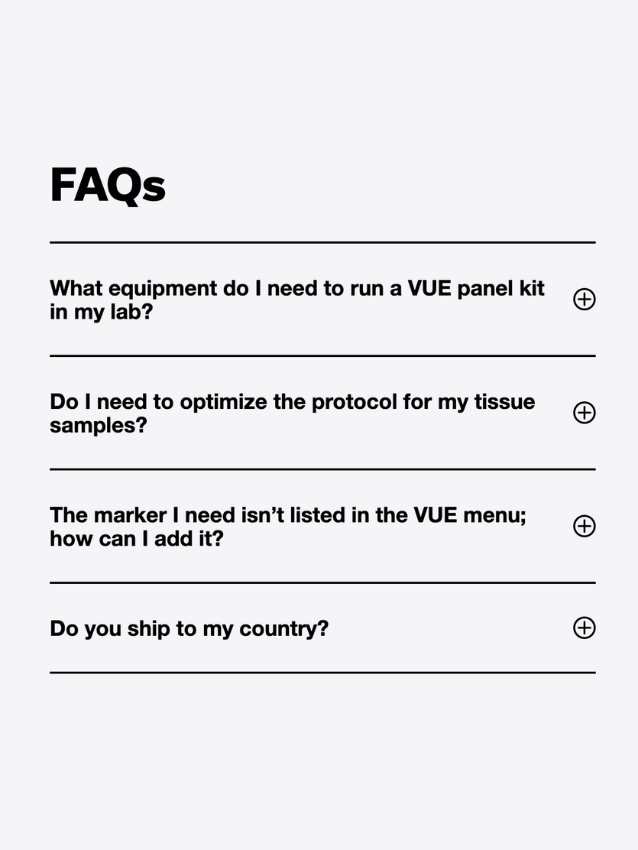Don’t Knock It TIL You’ve Tried It
My name is Kirsty Maclean Ph.D. and I’m the Senior Director of Scientific Marketing at Ultivue. Originally from Scotland, like so many other Europeans I moved to the US for my post-doctoral studies. The late 1990s was a pivotal time in science: novel methods of gene manipulation for knock out/knock-in mouse models of cancer were being explored, along with game-changing tools like microarrays to measure transcript expression. However, the human genome published in 2001 changed the face of biology and rapidly catalyzed a transformation of scientific progress and medicine. I’ve always been curious, with a need to be on the cutting edge of scientific innovation, so after a successful academic career I moved to the rapidly evolving world of biotech. A 15-year journey in this space ultimately led me to Ultivue, their novel InSituPlex® assay, and following advances in tissue multiplexing.
September 15, 2021
My name is Kirsty Maclean Ph.D. and I’m the Senior Director of Scientific Marketing at Ultivue. Originally from Scotland, like so many other Europeans I moved to the US for my post-doctoral studies. The late 1990s was a pivotal time in science: novel methods of gene manipulation for knock out/knock-in mouse models of cancer were being explored, along with game-changing tools like microarrays to measure transcript expression. However, the human genome published in 2001 changed the face of biology and rapidly catalyzed a transformation of scientific progress and medicine. I’ve always been curious, with a need to be on the cutting edge of scientific innovation, so after a successful academic career I moved to the rapidly evolving world of biotech. A 15-year journey in this space ultimately led me to Ultivue, their novel InSituPlex® assay, and following advances in tissue multiplexing.
Immunohistochemistry (IHC) has come a long way since my post-doc days in that it required tedious, labor-intensive protocols and -to be honest -left you with limited information beyond your single marker of interest (mine was p53!). Today, technology that integrates multiplex marker detection with single-cell resolution and retaining tissue context provides new insights into cellular composition, cellular functions, and cell-cell interactions.
Tumor infiltrating lymphocytes (TILs) are usually assessed by pathologists in tumor biopsies because they can have prognostic value for the patient. They are even more important in cancer immunotherapy, because most therapies try to activate TILs to kill the tumor. But when you see TILs in a tissue slide stained with hematoxylin and eosin (H&E), they all look alike! IHC labels one marker at a time; and the number and density of TILs is typically estimated by eye.
A new study using two-marker multiplexed immunohistochemistry (mIHC) of CD4, CD8, and FOXP3 expressionby digital image analysis investigated the distribution of T-lymphocyte subsets in hereditary breast cancer (Jørgensen et. al., 2021). Notably, they demonstrate that a high percentage of CD4-, CD8-or FOXP3-positive TILs was associated with lower mortality, and the presence of CD8-positive TILs – the subset that can help the body kill tumor cells – was related with disease-free survival.
This is one of a growing number of studies we plan to highlight that demonstrates single-marker IHC is inadequate to address the many multi-faceted problems facing immunotherapy. Picking multiple biomarkers, and critically the right biomarkers to identify the key cell types – while utilizing less biopsy material -may provide better answers for physicians and their patient.
With that in mind, our InSituPlex technology enables whole tissue slide labeling of these important T cell subsets as well as detailed exploration of the tumor microenvironment -all while preserving tissue morphology to enable same slide traditional H&E staining (compared to other technologies in excellent reviews by Tan et. al, 2020 & McGinnis et al., 2021). We provide flexible options, including optimized off the shelf panels and up to 8-plex custom assay development (from our menu of >70 immune-relevant targets or your own targets) so scientists can realize the benefits of comprehensive biomarker assessment, co-localization, and compartmentalization to address their hypotheses, and we hope ultimately to help develop and predict responses to therapy.
I often think back to my post-doc days, where just a single experiment of the many replicates needed to convince yourself (or journal reviewers!) took weeks and weeks of work. Today, efficient tissue insights using multiplexed immunofluorescence can arm clinical trials to extract more advanced information from tissue biopsies, and importantly, might better predict how patients will respond to certain treatments.
For more information on any of our panels visit https://ultivue.com/products/
For more information on Ultivue services visit https://ultivue.com/assay-dev/








